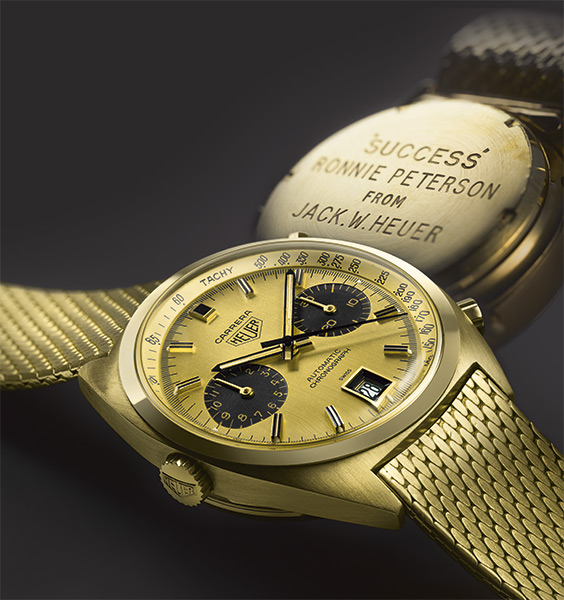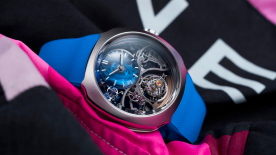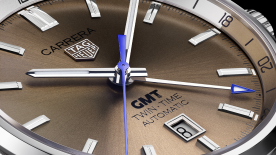What has brought engraved cases back into fashion? It’s impossible to say. Fashions come and go, seemingly without rhyme or reason. Engraving as a style of decoration for watches – whether of the wrist or pocket variety – has never been particularly popular. In fact, it’s far more common on table clocks. But as an aesthetic, it has never completely died out. Today, it seems to be making a return to favour. Why?
An unsung master
It’s all about people, and brands. In the former category, we have one very unassuming engraver: Bram Ramon. Many years ago, he was spotted by Yvan Arpa, the man behind ArtyA. Since then, the brand has produced a number of extremely limited editions and one-of-a-kind pieces that have become highly sought-after collectors’ pieces. ArtyA has concentrated largely on engraving titanium dials, which is a particularly demanding exercise. Recently, they also released a platinum minute repeater with a fully engraved case.
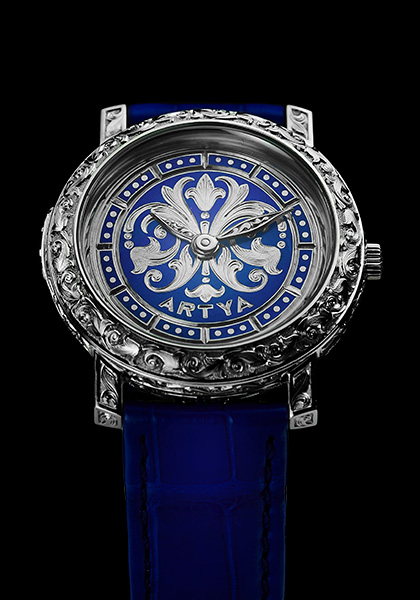
From Minerva to Patek Philippe
Decorative motifs have been a consistent presence throughout watch history, but they remain relatively rare. The latest and probably the most prestigious reference in this mode is the Grandmaster Chime (Ref. 5175) by Patek Philippe, a Grand Complication whose case opulently engraved with floral motifs made quite an impression on its release. Its extravagant design breaks with the tradition of more subtle decoration such as we see on this Minerva (carved gold case, date unknown).

These “wheat-ear” or “barleycorn” motifs flourished in the early twentieth century, when similar decorations were also omnipresent on the more upmarket furniture. The design can be traced back to the Consulat and Empire periods, which is when this piece in ebony with copper marquetry (Napoleon III) was made. Its floral border certainly bears more than a passing resemblance to an engraved watch bezel.

The Longines story
When watchmaking entered its more minimalist Art Deco phase, several watchmakers continued to produce engraved cases. One such was Longines, which created a number of exquisite women’s timepieces featuring engraving and gem-setting. The company’s fascinating archives in Saint-Imier contain original drawings of the Les Elégantes collection, which was updated and reissued in 2002. It is a testament to the importance of case decoration (mainly on ladies’ watches) for the watchmaker that, in the early 20th century, the majority of Longines’ watch engravings were executed internally, in the company’s own decoration workshops.

Engraved and signed
Closer to the present day, the Ateliers Louis Moinet have made engraved cases a pillar of their brand aesthetic. First, there are the fully engraved highly limited series such as the remarkable Memoris Red Eclipse (now no longer available). And second, the original signature of Louis Moinet (1768-1853) is systematically engraved on the casebands of all new releases.

We should also mention perhaps the most obvious – if atypical – example: the Jaeger-LeCoultre Reverso. Its protective swivel back, designed to protect the watch crystal from damage while its wearer is playing polo, has for many years been a canvas for personal expression highly prized by collectors, which have included figures as illustrious as Edward VIII, the Duke of Windsor (1894-1972).
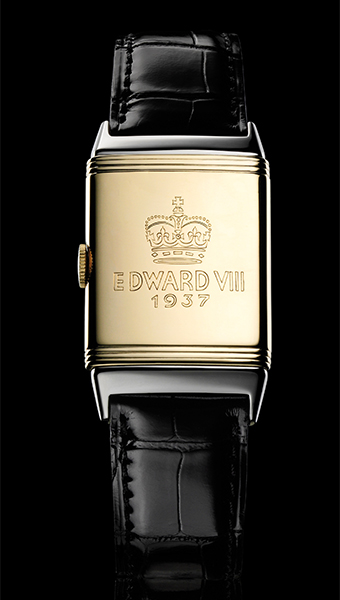
The unsellable Ronnie Peterson

And then there’s the case of Ronnie Peterson’s Heuer Carrera. Jack Heuer had a habit of giving watches to racing drivers. He presented the Swedish driver Ronnie Peterson (1944-1978) with a magnificent Carrera chronograph with a solid gold case and bracelet. He had it specially engraved: “Success Ronnie Peterson from Jack W. Heuer”. This made the watch completely unique and thus impossible to sell. Given the strong temptation in those days to sell timepieces for the scrap value of the gold, Jack Heuer used the engraving to forestall any possibility of his Carrera being sold. In 2016 Heuer, now TAG Heuer, bought the watch from Sotheby’s for CHF 225,000.
